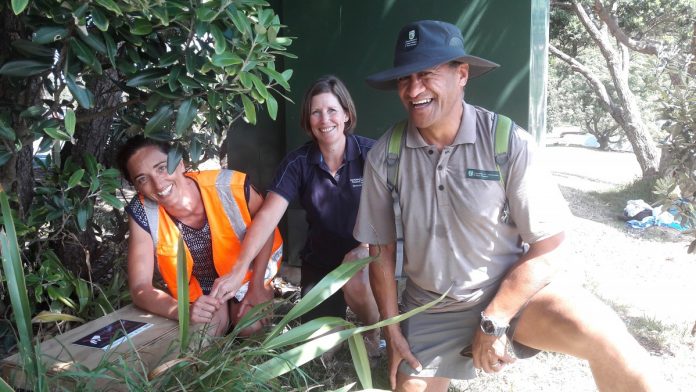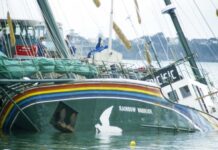Waiheke has been shortlisted for Government funding for an island-wide predator eradication programme, raising the prospect that the island could become a flagship for the nationwide Predator Free 2050 campaign.
An application by the Waiheke Collective, made up of local conservation groups, is one of seven chosen from 45 applicants to proceed to the final stage of evaluation. The collective has until 29 January to submit a full project proposal.
In its first-ever funding round, Government agency Predator Free 2050 Ltd plans to invest in two or three large-scale predator control and eradication projects, including proposals with “breakthrough science” potential. It is expected to announce its decisions in February.
With the previous National-led Government setting the goal of mainland New Zealand becoming predator free by 2050, Waiheke, as a populated island, is seen as an ideal proving ground – building on the gains made on unpopulated islands in recent decades, including many in the Hauraki Gulf.
The Waiheke Collective aims to expand on work already undertaken on the island by volunteer groups such as Forest and Bird, Waiheke Gulf Conservation Trust and Waiheke Resources Trust and local initiatives such as Rocky Bay Ratbusters, Onetangi Halo Project and Te Matuku Landcare Group – using such efforts as the basis for an island-wide campaign.
And it believes Waiheke could become predator-free in as little as eight years.
“If we all pull together we can achieve it by 2025, given the amount of work already taking place,” spokeswoman Mary Frankham says.
“Waiheke represents a fantastic opportunity to free ourselves of predators over a diverse island landscape and community. Other parts of New Zealand will be watching our progress – Waiheke could be one of the first populated islands in the world to become predator-free.”
While critics including some scientists continue to dismiss the nationwide predator free target as unachieveable, Ms Frankham says clearing a populated island of animal pests is “the next step along the journey”.
“My understanding from ecologists and people experienced in [unpopulated] island eradications is that they think a predator-free Waiheke is feasible.”
Ms Frankham says the significant efforts made by Waihekeans to protect native species and habitats through stoat and rat control projects gives confidence.
“Predator Free Waiheke is about connecting all of these projects together with an island-wide programme.”
Projects supported by the Predator Free NZ agency are expected to secure matching investment of $2 for every $1 of Crown investment.
Formed in September 2017 to pursue the predator-free goal, the Waiheke Collective has an open membership – ecological restoration groups and individuals are welcome to join.
“We understand that various techniques work differently for various groups and landscapes so we talk about having a toolbox of approaches,” Ms Frankham says.
Members have been mapping current animal pest control efforts on the island. “We know at least 30 per cent of Waiheke land is already under some level of rat control.”
Lending support to the Predator Free Waiheke vision is ecologist Jo Ritchie, involved in ground breaking eradication and reafforestation programmes at Tawharanui, Tiritiri Matangi, Rotoroa Island and the Glenfern Sanctuary on Great Barrier Island.
The group has local board funding to develop an ecological restoration vision and strategy document, working with partners and coordinated by a facilitator. Following this process, it plans to form a legal entity. Once funding is secured, Ms Frankham says members will work with the community to provide information and advice on a range of bait and trapping options to control rats and stoats in people’s backyards and across the landscape.
A website should be up and running next month.
Ms Frankham admits the Government’s Predator Free 2050 vision is ambitious but “goals are set as something to strive for and [predator free] certainly galvanises people”. • Geoff Cumming







